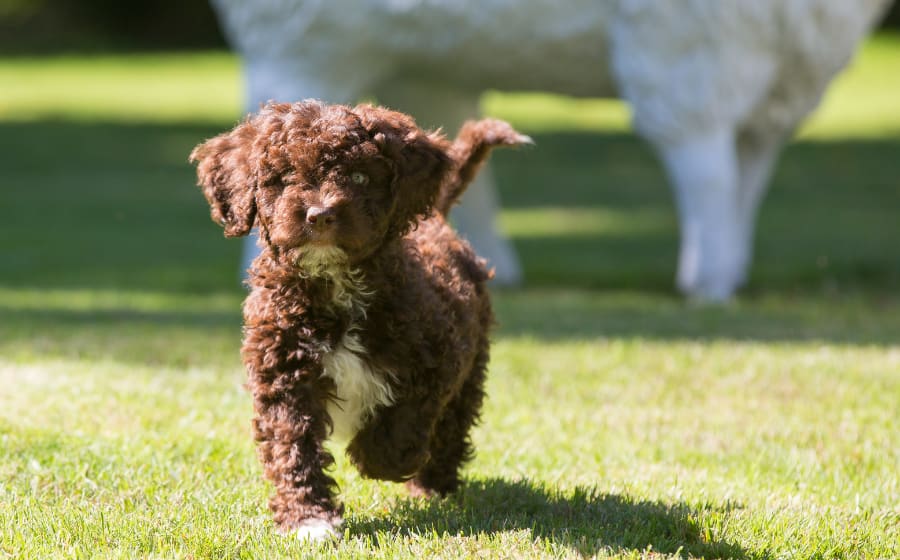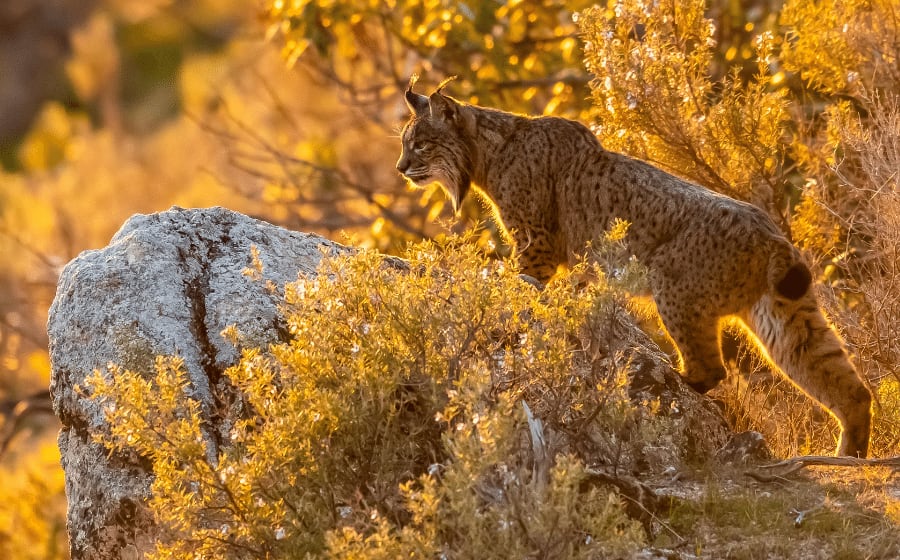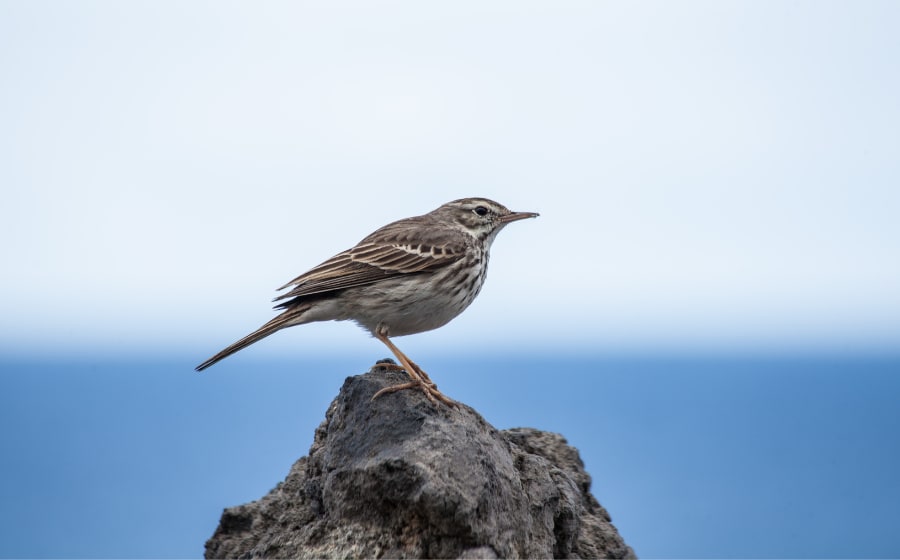Top 9 Spanish Eagles: The "Imperial Eagle" is a Beauty!
October 25, 2022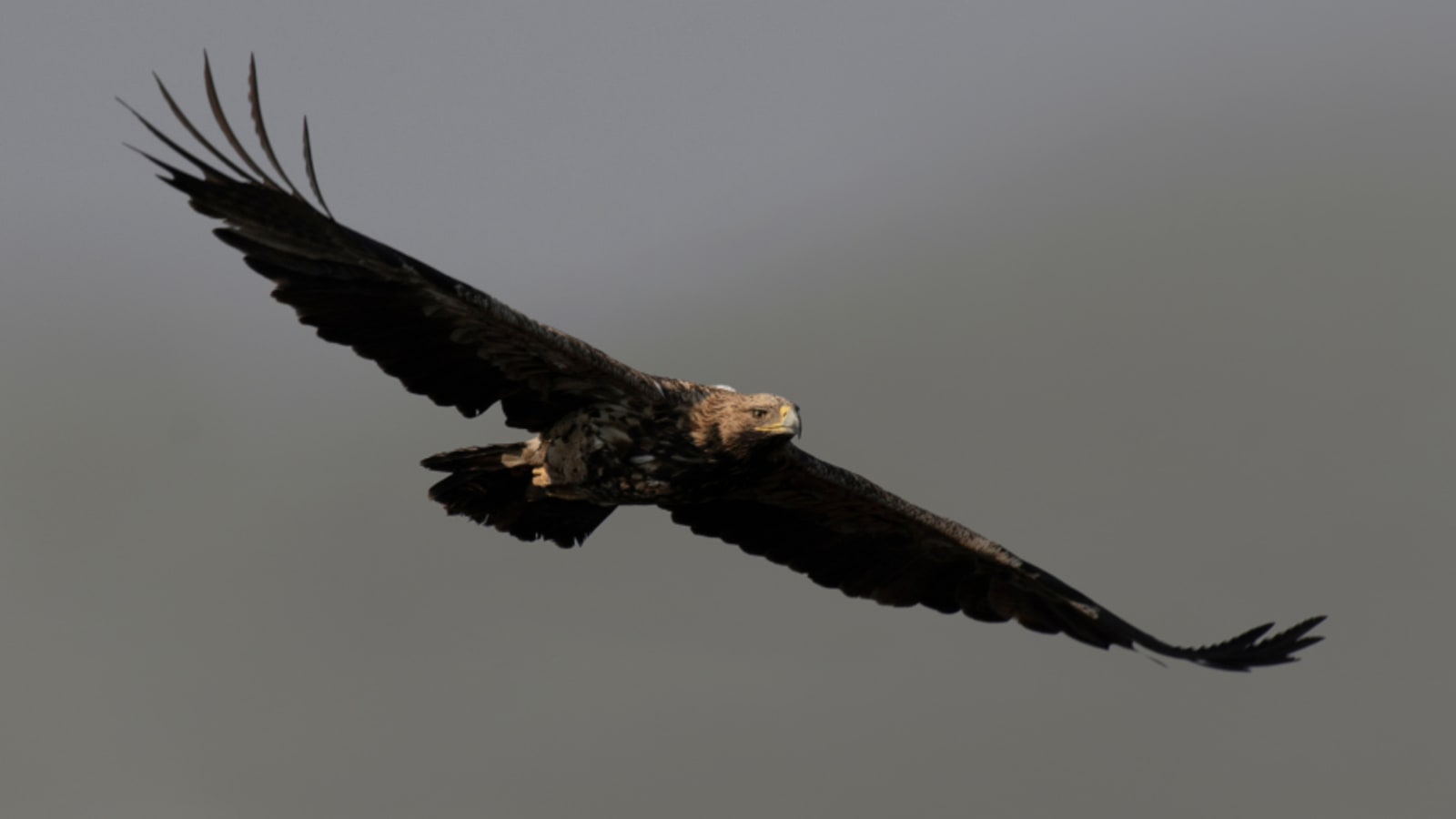
Win a FREE Trip to Spain!
Exciting Announcement! For the first time, we're thrilled to offer exclusive trips to the heart of Spain - an experience like no other. This isn't your typical tourist journey; it's a unique opportunity to immerse yourself in authentic Spanish culture, alongside real locals and our passionate team.
But there's more! Simply by requesting information about this amazing trip, you'll be entered into a special draw to win a Fully Paid Trip to Spain for Two. And that's not all - everyone who inquires will receive an exclusive bonus gift, valued at $500, available only now.
Ready to Discover the Real Spain?Click Here ↑ to Request Information & Enter the Draw!
In Spain, we are fortunate to have some of the most important and characteristic birds in the world, among which our beloved eagles stand out.
Eagles are mythical animals that are represented in many cultures. Centuries ago, the eagle was the symbol of the Roman Empire and defined power in ancient Egypt.
Numerous specimens inhabit Spain due to the richness and diversity of the country. The lush forests, high cliffs, steppes, coasts, and mountains have become the home of many eagles.
Spain is actually one of the best places in Europe to observe these magnificent endemic species in their natural environment.
Whether you are passionate about falconry or simply interested in knowing more about our Spanish eagles, you will love what you are about to learn. You will become an expert, knowing everything about them, from what they eat, how they reproduce, where you can find them, and much more! Let me introduce you to the 9 types of eagles in Spain.
Table of Contents ▼ ▶
1. Spanish Imperial Eagle - Aguila Imperial
Aquila Adalberti

Let’s begin with our most beautiful and special eagle. You may know this eagle as the Spanish eagle or white imperial eagle. It’s one of the most typical in Spain. The imperial eagle has a size of 80 cm (2.20 cm with wings spread) and weighs approximately 3 kg when adult. It’s one of the giant eagles on the planet!
To differentiate between juveniles and adults, you should know that juveniles have a light brown or reddish plumage that turns yellow with time. As they grow up, they will have a dark brown tone with straw touches, but it’s not until they turn five that they will get their definitive plumage. You will recognize them by their dark brown backs and white shoulders. They have long, rectangular wings and a long, narrow, pale brown tail.
You will have a high chance to see this absolute beauty in central and southern Spain, in areas where the vegetation is very varied. It’s a species endemic to the Iberian Peninsula and characteristic of the Mediterranean forest.
In Spain we have an incredible variety of forests worth discovering. If you want to take a look, here are some of my favorites:
- The 9 Best Forests in Spain to Get Lost in The Wild
The imperial eagle feeds on rabbits, squirrels, and hares. Although it also captures reptiles and other birds, such as pigeons, magpies, partridges, or flamingos, in wetter areas.
The imperial eagle’s breeding season begins in February. It reproduces between February and March, laying 1 to 4 eggs yearly, which is not much. The imperial eagle’s nest is built with sticks and is always placed in a tree. The female is in charge of incubating the eggs for 40 days since the male rarely takes control. Then comes the moment known as “siblicide,” where the more vigorous and older chick will kill the smaller one. In fact, sibling competition results in 57% of all chick deaths. It will take 70-85 days for the chick to fly and hunt on its own. After 3-6 weeks, the parents abandon it to continue on its own.
Here’s a map of Spain so you know where to find this eagle.
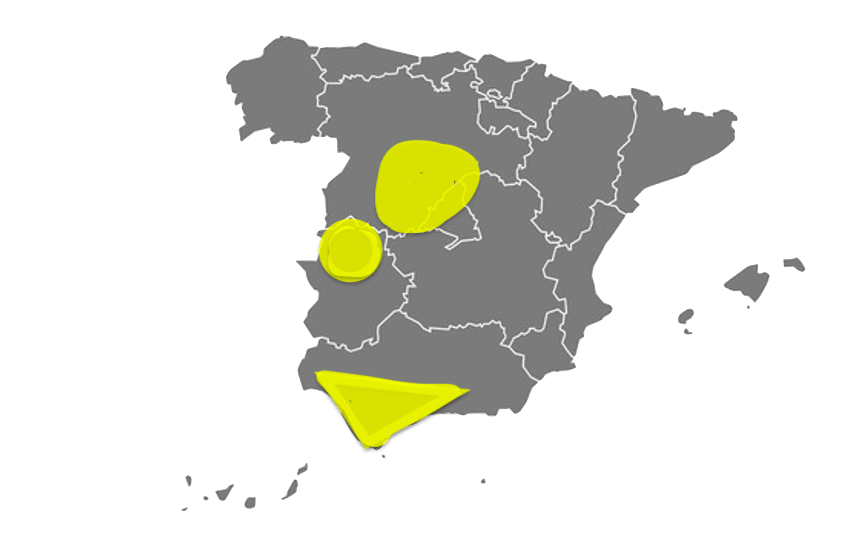
The imperial eagle is in danger of extinction, and today we only have about 200 specimens. Monfragüe National Park has 12 pairs of eagles so far.
2. Iberian Golden Eagle - Aguila Real Ibérica
Aquila chrysaetos

This imposing eagle is known as the Golden Eagle or Spanish Golden eagle.
It has a size of 75-96 cm and a wingspan of 1.80-2.30 meters, weighing a total of 3.5-5 kg.
The colors of this eagle are very dark brownish-brown with some golden touches on the wings, neck, and talons. It is considered a silent bird; the only thing you may hear is a slight whistling sound.
The golden eagle inhabits practically the entire Iberian Peninsula and many areas of northern Spain, more specifically in mountainous regions.
If you want to know more about our incredible northern cities and the best places to visit you have to take a look at this post:
Some of the typical places of this eagle and where it can be seen at all times of the year are the Montes de Toledo, Sierra Morena, the central system, Iberian, and Betic. It also inhabits the north of Africa.
It feeds mainly on hares, rabbits, reptiles, and other birds, such as pigeons and quails.
A curious fact about this bird is that at the time of courtship, the male performs a series of maneuvers and pirouettes in flight. To attract the female, he dives several times to demonstrate his strength.
The Golden Eagle takes five to eight weeks to build its nest, which is made of branches and grasses. The nest is usually on rocky peaks and at a considerable height. It prefers open spaces with good visibility and avoids extensive forests.
The golden eagle’s mating season is in late January and early February. This eagle will not be with another pair until one of the members dies. They can lay between 1 and 3 eggs. One thing to note about their eggs is that they do not have the typical white color but have small red or brown dots. The female is responsible for incubating the eggs for 35 to 45 days.
Here’s a map of Spain so you know where to find this eagle.

The Iberian Golden Eagle is threatened with extinction in Spain. Its main threat is the destruction of its habitat by large constructions such as factories and other public works. There are approximately 1,600 pairs of Iberian golden eagles to date.
3. Bonelli’s Eagle - Aguila Perdicera
Aquila fasciata

Now we’re talking about a medium-sized day eagle. It’s 71 cm (160 cm with wings open) and weighs between 1.5-2.3 kg. Its wings and body are characterized by a mixture of dark brown feathers, although its underparts are white and finely striped.
During the year, the Bonelli’s is a solitary bird, usually seen hunting or perched alone. It’s characterized by being very quiet, although this changes entirely during the breeding season when it becomes very noisy.
You can find it in mountainous areas up to 3000 meters or regions with many trees or cliffs.
It feeds mainly on rabbits, hares, and medium-sized birds such as pigeons and partridges.
Bonelli’s eagles lay between 1 and 2 eggs, and their nest is up to 2 meters wide and 1 meter deep.
Bonelli’s eagle is not only present in Spain but also in North and East Africa, parts of southern Europe, India, and parts of Asia. It’s found in areas such as Sierra Morena and Extremadura in Spain.
Here’s a map of Spain so you know where to find this eagle.
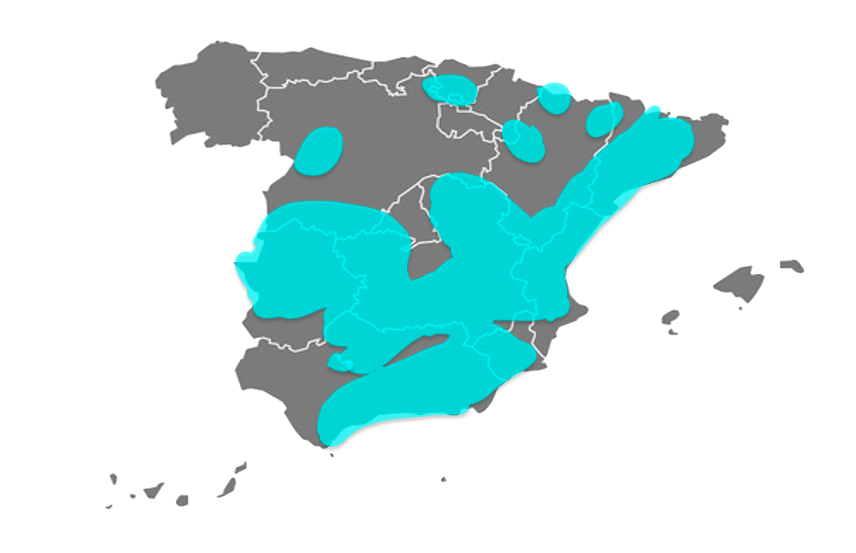
This eagle is currently in danger of extinction. It seems unbelievable but their main threat are electric towers.
4. Booted Eagle - Aguila Calzada
Hieraaetus pennatus

This beautiful eagle is a migratory bird found throughout Eurasia. It measures between 45-54 cm and 112-132 cm when it opens its wings and weighs 600 grams to 1.2 kg. A curious fact is that the adult female can be twice the size of the male!
You can find two very different color phases among these eagles, the light or pale phase and the dark or brown phase. But they are best distinguished by the pale form on the underside. The upper parts of both states are similar, with dark gray feathers and lighter brown wings with an almost white color at the tips. When the Booted eagle is in the light phase, they stand out for its light gray color, although the head and wings are darker. The legs are always yellow, and the bill is dark gray or black. The best way to tell if you are looking at a Booted eagle is by the bright white spots on the top of the wing (on the shoulder).
It can be found in lush fields, especially in mountainous areas, and oak and deciduous forests, especially in central and western Spain. It migrates to Africa in August and September. Cabañeros National Park is a good place to see them!
The Booted eagle is the smallest in Spain and can live up to 15 years.
It feeds on small mammals such as rabbits, reptiles, and other birds. Although its favorite prey is the rabbit, the Booted Eagle is also known as the “Rabbit Eagle.”
This particular eagle builds its nest with branches and large sticks, and they are usually found in trees, although there are other times when they can be placed on cliffs. Occasionally they also take over nests of different species.
In terms of reproduction, the bald eagle lays 1 or 2 eggs. The female incubates them for 45 days while the male goes hunting and brings food. Once the young are born, they usually stay with their parents for five to seven weeks.
Here’s a map of Spain so you know where to find this eagle.
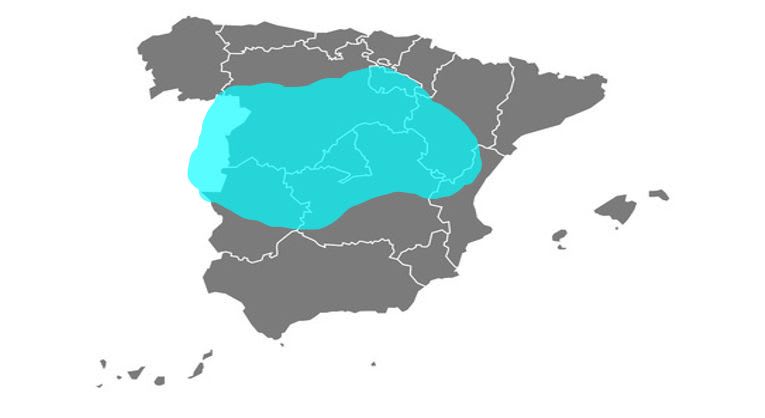
In the case of this eagle, it’s not in danger of extinction like some of the other birds in our country. This eagle adapts very easily to different environments. There are approximately 50,000-90,000 eagles worldwide.
5. Osprey - Aguila Pescadora
Pandion haliaetus

The Perching eagle is also known as “Guincho.” It has a size of 50-65 cm and a wingspan of 150 to 167 cm, with a weight of 1.5 kg.
You can recognize this bird by its white head with some brownish tints on its cheeks. However, its tail is brownish-black. The beak is black, and the underside of the legs is bluish-gray. Its underparts and wings are white. An essential fact to know, whether female or male, is that females are a little bigger than males. Also, the females have a kind of “collar” of dark feathers on the upper part of the chest.
But it may be easier to recognize it in full flight since it stands out for its long, twisted wings that rise above their heads.
The osprey has a life expectancy of 25 years. It feeds exclusively on fish of all kinds. One of its favorite fish is the carp in northern Spain. Its way of hunting is very characteristic, with an incredible dive and then grabbing its prey with its claws.
When courtship, the osprey stands out for circling with its mate and crossing each other at high speed.
Its nest is made of sticks and grasses and is usually near the water. You can also find it on top of some trees, on rocky edges, or sometimes even on the ground. The female usually lays 2 to 4 eggs in mid-May, and the mother and father incubate them for five weeks. The young are ready to leave the nest when they are 7-8 weeks old.
Ospreys can be found on all continents of the world except Antarctica.
In Spain, ospreys can be found in coastal areas, islands, rivers, and lakes. Most species are found in Andalucia (especially Cadiz, Huelva, Malaga, and Seville) and Extremadura. There are approximately 280 pairs throughout Spain. Although in the cold season, this eagle migrates to North Africa.
It may surprise you, but Spain is one of the countries with more Ospreys worldwide (approximately 68% live in our country).
Here’s a map of Spain so you know where to find this eagle.
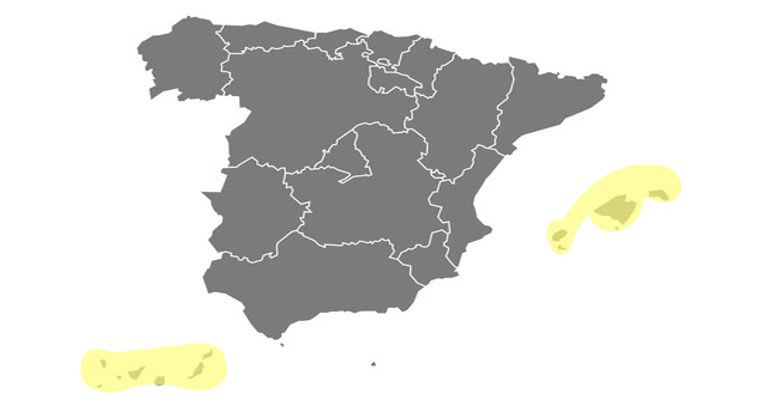
In Spain, it has often been considered a bird at risk of disappearing from the ecosystem. But in recent years, there has been an increase in the number of species. Its most significant threat is the action of human beings due to the destruction of its natural habitat and hunting practices. Although it must also be said that the Osprey population in the rest of the world is not at risk.
6. Red Kite - Milano Real
Milvus milvus

This eagle has a size between 60-66 cm and a wingspan of 1.75-1.95 meters, weighing 0.8-1.3 kg.
The red kite stands out for its reddish-brown color and relatively open tail. Its head has a light gray tone with dark stripes. But undoubtedly, what stands out the most is its yellow beak with a dark end and striking eyes.
In Spain, the red kite inhabits the Iberian Peninsula. It avoids wetter areas such as rivers, seas, and coasts. It prefers lush forests and sometimes even small villages. Cabañeros National Park is a good place to see them.
The average life expectancy of the red kite is only 5 years.
Its most common food is carrion, dead animals, and worms. It also eats mice and other birds.
Red kite nests are usually made of wood and mud, positioned in a tree, and lined with sheep’s wool for the babies to be comfortable.
They first reproduce at the age of two, laying about 3 eggs. The eggs are characterized by being white with red spots. The female is in charge of incubating them while the male hunts for them. The chicks stay in the nest until they fledge after two months.
Here’s a map of Spain so you know where to find this eagle.
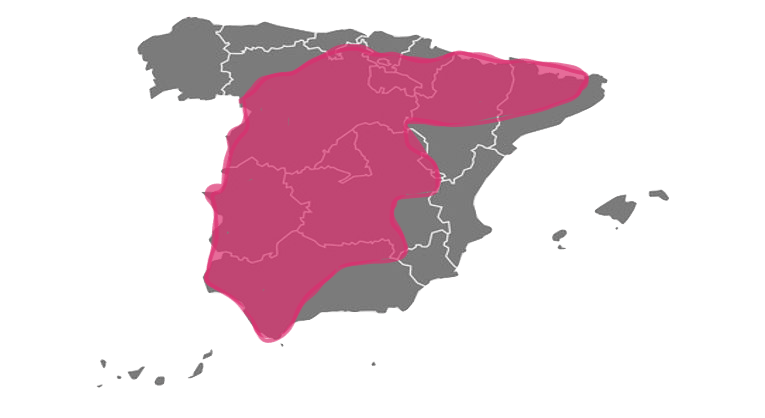
The red kite is currently in danger of extinction due to the lack of lush forests in some areas.
7. Black Kite - Milano Negro
Circaetus gallicus

The main difference between the black and red kites is that the black kite is slightly smaller, its tail is less forked, and its plumage is much darker. However, young black kites are lighter in color.
It has a size of 47-60 cm, a wingspan of 140-150 cm, and a weight of 540-750 grams.
The black kite lives in Europe, Asia, Africa, and Australia.
The average life expectancy of black kites is 25 years.
It’s a bird that adapts very well to all types of environments, so you can see it in places near water, lush forests, and even open spaces.
The black kite generally eats lizards, rabbits, rodents, small birds, amphibians, and insects, especially grasshoppers. It also feeds on carrion.
When courtship, the black kite makes a kind of aerial show in which both males and females participate. The fling becomes a mixture of screams, boisterous songs, and spiral turns pointing to the ground.
The breeding phase takes place in spring. And their nests are made of sticks and lined with soft materials, a mixture of grasses and feathers. They usually place their nests in the branches of trees and at a considerable height.
The black kite usually lays about 2 eggs, which are white with brown spots. The female incubates the eggs for 30-35 days, and the male takes care of the food. But once the chicks hatch the pair exchanges tasks. The chick will stay in the nest until it is two months old.
Here’s a map of Spain so you know where to find this eagle.
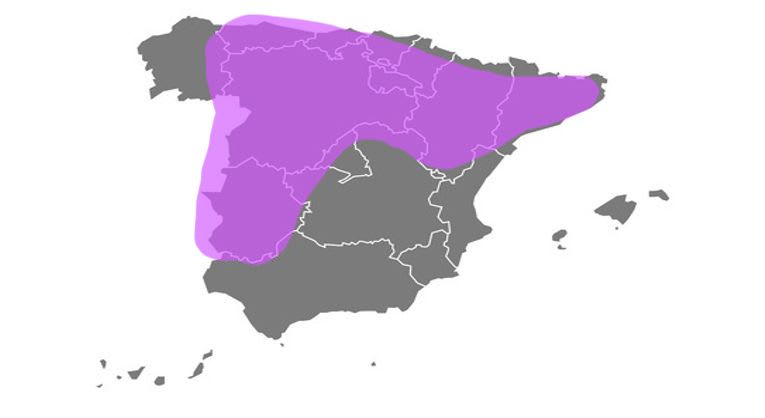
The black kite is not endangered and is therefore listed as “Least Concern.”
8. Short-Toed Snake Eagle - Aguila Culebrera
Circaetus gallicus

It has a size of 62 to 70 cm and a wingspan of 168-188 cm, with a weight of 1.2-2.3 kg. The short-toed eagle is primarily brown with white breasts and underparts (with some stripes). Its wings are also dark brown, and its tail has dark bars. Females have a longer tails than males. Both have very bright orange-yellow eyes, and their legs are gray.
The short-toed eagle has a life expectancy of 17 years living in the wild.
Besides being present in Spain, this eagle can also be seen in Europe, northwest Africa, and the Middle East. They are usually found in open spaces, deciduous forests, and semi-desert areas.
It’s funny, but in Spain, we have some areas that are real deserts! If you don’t believe me, check this article:
The diet of the short-toed eagle is based mainly on snakes. They also feed on lizards, toads, frogs, small mammals such as rabbits, sick or injured birds, and even chicks.
At the time of courtship, the short-toed eagle is usually very noisy. The male usually calls the female with a high-pitched whistle. They typically perform an exhibition of circling and different dances in the sky.
As for the nest, it’s formed by sticks and some soft grasses. They are usually placed in trees and sometimes on cliffs. Sometimes they have even used nests of other birds.
Their breeding season goes from April to October for birds located in the western part and from December to May for those living in the eastern region.
Short-toed eagles lay only one egg, which incubates for 47 days. The young leave the nest at 70-80 days when they have grown feathers.
Here’s a map of Spain so you know where to find this eagle.
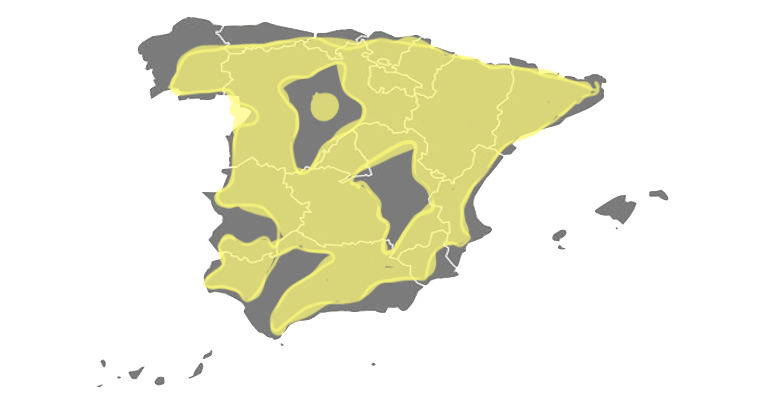
Short-toed eagles are not endangered and are listed as “Least Concern.”
9. Common Buzzard - Busardo Ratonero
Buteo buteo
The Buzzard is a massive bird of prey with vast, rounded wings and a well-shaped tail. It has a size of 50-60 cm and a wingspan of 1.12 - 1.38 m, weighing 600 - 1.2 kg.
This bird is distinguished by a grayish-brown coloration all over the body and a kind of white belt.
This eagle will fly very high in the sky and make wide circles during the nesting season.
Besides being in Spain, you can find it in other parts of Europe, such as Iceland and Norway. It also inhabits Asia, Mongolia, and South Africa.
Its habitat is usually forested with large trees. However, it has also been moving towards open spaces and pre-desert areas. But the Buzzard avoids arctic and subarctic regions.
The Buzzard feeds on mice, rabbits, moles, pigeons, and other birds.
This eagle builds its nest with branches of all kinds and always positions it in trees in forests and at a high altitude. They usually lay 2 to 4 eggs, and incubation lasts 33-35 days. The young remain in the nest for up to 50 days.
This bird can be aggressive to humans during the breeding period. And if it sees someone approaching the nesting area, it makes a loud whistle to warn that it is watching.
The population of Buzzard is currently stable. It’s not in danger of extinction, although it suffered intense persecution during the 19th and early 20th centuries.
Here’s a map of Spain so you know where to find this eagle.
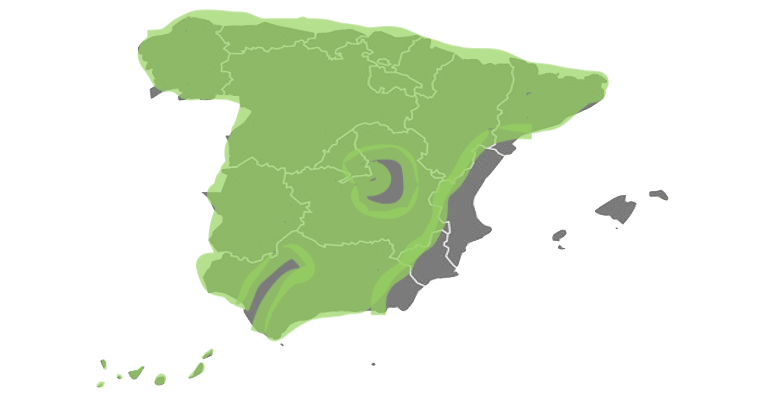
Before reading this article, did you know that most of our eagles are in danger of extinction in Spain?
For many years there has been a great recession of breeding pairs due to the destruction of their habitat. But little by little, thanks to the ecological plans, we are becoming aware that our actions affect animals, including eagles.
So if we continue behaving well, we can achieve that many of the species of our country do not become extinct. This way, the population of all of them will increase little by little.
Are you agree with me?



